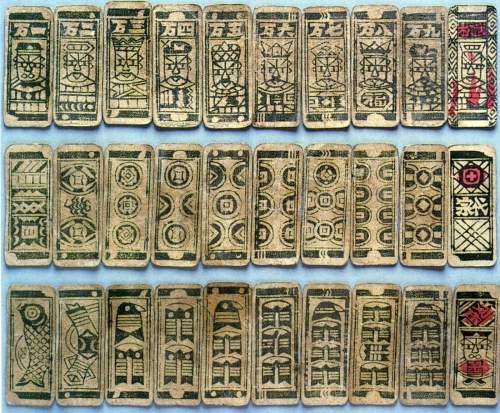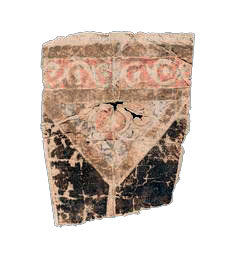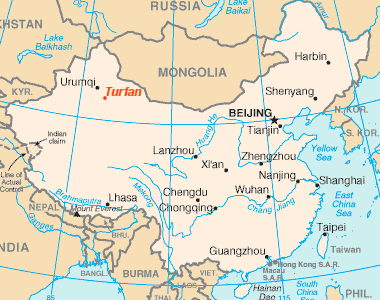https://books.google.de/books?id=Cz3EDw ... im&f=false
“Masters” and “Natives”: Digging the Others’ Past
by Svetlana Gorshenina, Philippe Bornet, Michel E. Fuchs, Claude Rapin
Walter de Gruyter GmbH & Co KG, 08.10.2019 - 394 Seiten
The book focuses on the relational dynamic between “masters” and “natives” in the construction of scholarly narratives about the past, in the fields of archeology, history or the study of religions. Reconsidering the role of subaltern actors that recent postcolonial studies have tended to ignore, the present book emphasizes the complex relations between representatives of the imperial power and local actors, and analyzes how masters and natives (and their respective cultures) have shaped each other in the course of the interaction. Through various vectors of intercultural transfer and knowledge exchange, through the circulation of ideas, techniques and human beings, new visions of the past of extra-European regions emerged, as did collective memories resulting from various kinds of appropriations. In this framework, the most important question is how these dynamic processes determined collective memories of the past in plural (post-)colonial – in particular, Asian – worlds, participating to the construction of national/imperial/local identities and to the reinvention of traditions.
The article "Mikhail Bukharin: The 'Maîtres' of Archaeology in Eastern Turkestan: Divide et Impera" contains political details to the situation of Turfan in 1905.
******************
Hargrave had written (quoted already above) ...
A CHINESE PLAYING CARD IN THE STAATLICHES MUSEUM FÜR VÖLKERKUNDE, BERLIN
Found in 1905 by Dr. A. von Le Coq with fragments of manuscripts of the Uigur period in the glen of Sangim near Turfan, Chinese Turkestan. This card, which corresponds to the Red Flower of the present Chinese pack, presumably is not later than the eleventh century A.D., and probably is the oldest known playing card.
The seal over the man's head denotes money, three fan, and the characters at the top and bottom give the maker's name. (From Stewart Culin, in 'The Game of Ma Jong.')
I take from this, that the card was found in Sangim (which seems to have been a location South of Turfan; modern maps don't show it).
Then there is a time called "Uigur period in Turfan" and I started a search and I found this article, in which the "Uigur period in Turfan" is related to 800 - 1300(or longer) ....
https://books.google.de/books?id=AnTsDw ... an&f=false
Title:
Ägypten, Vorderasien, Turfan: Probleme der Edition und Bearbeitung altorientalischer Handschriften. Tagung in Berlin, Mai 1987
by Horst Klengel, Werner Sundermann
Walter de Gruyter GmbH & Co KG, 18.05.2020 - 178 Seiten
**************************
https://en.wikipedia.org/wiki/Uyghur_Khaganate
**************************
I found ... (and I see, that Ross had found it , too]
https://healthy.uwaterloo.ca/museum/Arc ... index.html
The Game of Ma-Jong By Stuart Culin
Brooklyn Museum Quarterly, Volume XI, October 1924, pages 153-168
presentation by ELLIOTT AVEDON VIRTUAL MUSEUM OF GAMES
... already quoted by Ross:
at page 161 together with the picture: "Found in 1905 by Dr. A. von Le Coq with fragments of manuscripts of the Uigur period in the glen of Sangim near Turfan, Chinese Turkestan. This card, which corresponds with the red flower of the present Chinese pack (Plate 1), presumably is not later than the 11th century AD, and probably is the oldest known playing card.
The seal over the man's head contains a denomination of money, three fan, and the characters at the top and bottom give the maker's name."
The form and general appearance of these cards suggests a high antiquity. A presumably old card (Plate 2)[Footnote 10] in the Museum of Ethnology, Berlin, found by Dr. A. von Le Coq among the Uigur ruins in the oasis of Turfan in Chinese Turkestan, which must have belonged to a similar money-derived pack, varies but little from cards now current.
Footnote 10: "Dr. Le Coq, to whose courtesy I am indebted for this illustration, informs me that this card was found by him in 1905 while digging in the loess and debris from the mountain side, deposited on the N. terrace of Temple No. 10 in the glen of Sangim Aghyz between Murtuq and Qara Khoja near Turfan. "Unfortunately I am not sure that this locality, which is close to a road has not been invaded by treasure seekers. Still the objects found with it, a pen and ink case and some fragments of Uigur mss. belong without any doubt to the Uigur period." From these indications it would appear to he at least of the 11th Century."
Albert Le Coq
https://en.wikipedia.org/wiki/Albert_von_Le_Coq
https://de.wikipedia.org/wiki/Albert_von_Le_Coq
translated by google:
https://de-m-wikipedia-org.translate.go ... r_pto=wapp




